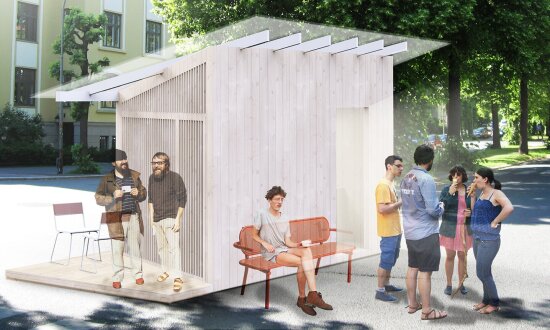For some time now, we have seen how online shopping has presented major competition to shopping centres, causing city and town centres to become ghost towns. When all you need is an app to buy groceries, urban centres are in even graver danger of dying out. This is particularly true of smaller towns, where grocery stores are often the town centre and where people meet. Technology has brought the world closer together and traditional barriers to interaction have been eradicated. We chat with each other via Messenger, debate through social media and find potential dates through Tinder. There is no doubt that new technology and digital arenas affect how we behave and interact, but they also affect how we use our cities and towns.
Never before have we spent more time online and on the phone, but does access to new digital meeting places make our physical environments less important? As we all know, people are herd animals that like to interact. Whereas everyone thought that the Internet would make the home office the preferred alternative, the development led to co-working spaces on every street corner. And never before have there been so many neighbourhood pubs in Oslo. This is not because a bottle of beer that costs NOK 100 is a necessity, but because people want to interact.
A more digital everyday life means that cities and towns have more internal competition for both housing and meeting places. Young people no longer simply play football with the neighbourhood kids. Instead, they use Messenger to arrange meetings in different areas of the city where things are happening and they feel most comfortable. Singles no longer go to the local hangout to find new love, but go to Tinder instead. The next step is to meet, with the entire city as their playground. What is important is therefore to find those places that offer the right balance between the informal and the romantic, between lots of people and the possibility for a little privacy and between bright lighting and semi-darkness.
Changes to our habits have only resulted in higher demands for how we design our cities in terms of both quality and creativity. In other words, architects and urban planners cannot afford to sit back passively. Physical meeting places where we interact and life unfolds are perhaps more important today than ever before. So what will it take for us to build good cities, meeting places and public spaces that incorporate the changes to our lifestyle?
Fortunately, we know a great deal about how to design quality architecture and cities. After all, no matter how much we like to talk about a society undergoing change, our perception of what are pleasant physical surroundings has not changed much. A city with open ground floors still feels more pleasant and safe than one that turns a blind eye to the goings-on on the street. And when we incorporate space between buildings in the city that allow the light to reach the building fronts and the city can take on the colours of the season, we give something back to those who live there. There is a good reason why we like to eat pizza on the streets of Rome and why some of us pay NOK 100 for a cup of coffee on Plaza Mayor.
All the same, it appears to be difficult to apply this knowledge when planning the cities of the future. All too often, the buildings are not of sufficient quality to survive several generations and neither lighting, ventilation systems, proportions nor materials are decisive for development. Is it because we spend more energy speculating on things we don’t know than focusing on how we can convert what we do know into practice? Or are we blinded by the desire to overcome the challenges we face today as quickly and cheaply as possible?
Although digitisation may seem scary to some, it’s even scarier to prioritise short-term needs and interests. Is it really a good idea to build massive amounts of housing in a short period of time that cannot guarantee adequate lighting conditions or quality material usage? Or to build new city districts so quickly that residents cannot keep up and the public spaces end up deserted and uninviting? And is it a good idea to allow shopping centres to be built along motorways when we know this destroys a vital city centre?
Our cities will not become smarter simply because we have more apps on our phones. In fact, this may even dumb us down. Smart cities still demand high-quality architecture and planning, in addition to courageous politicians, architects and developers that dare to think in terms of long-term processes. The cities of the future will outlive us - and our mobile phones.
Siri Holmboe Høibo, Advisor at DOGA
Hanna Dencik Petersson, Director of Oslo Architecture Triennale


